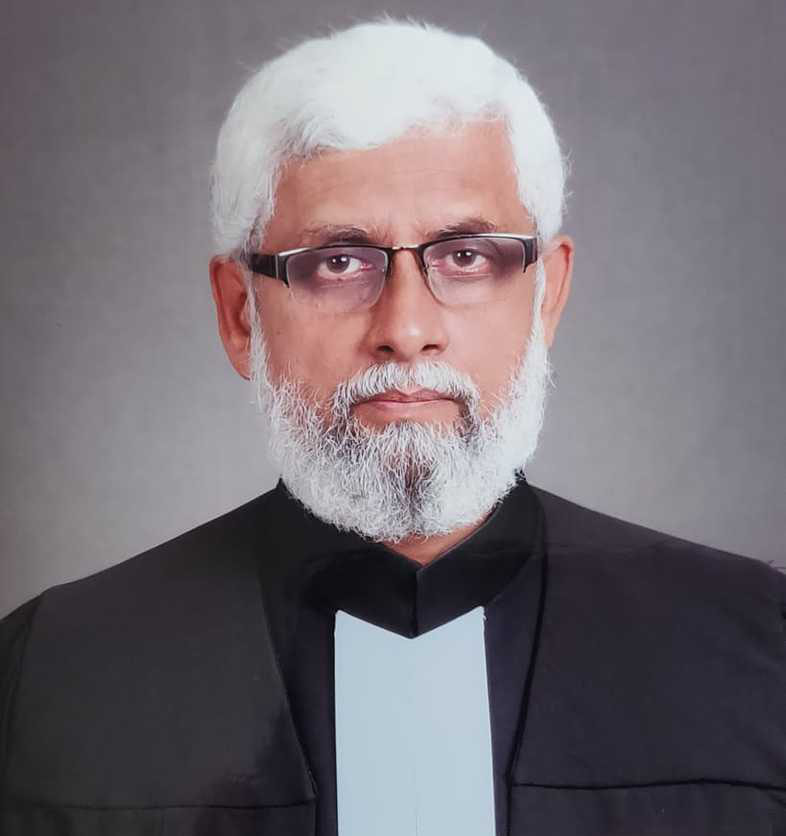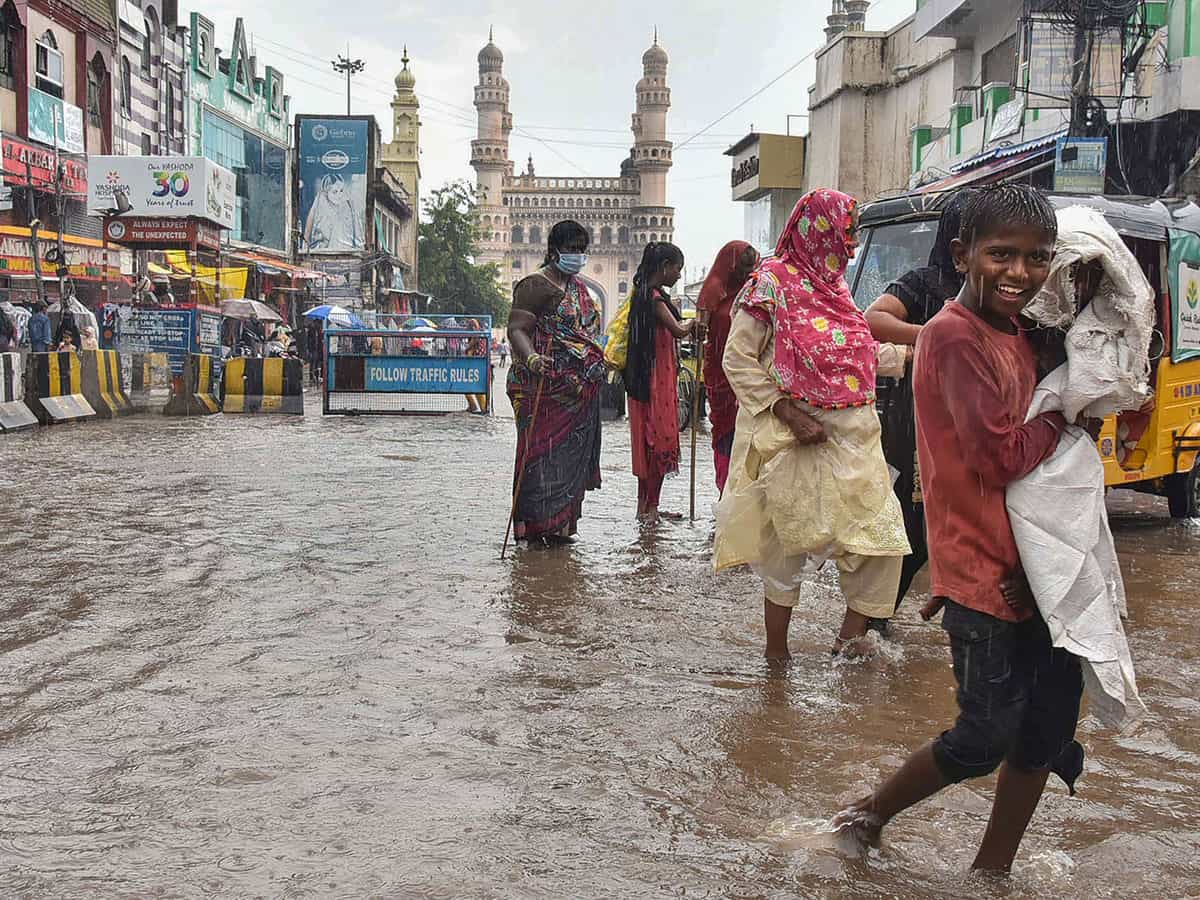
Prediction = forecast, guess, prophecy…Perdition = hell, purgatory, punishment…Water-body = lake, pond…Rain = precipitation returning evaporated vapour to earth…Deluge = torrent, flood, inundation…Law = mandatory rule, commandment, Act…Regularise = legalise, legitimise, make acceptable overriding violation of law…
Hyderabad has seen, as many other places, exponential growth of population. People need houses to live in. To build houses, they need land. Near a metropolis, access to infrastructure is superior. Hence people prefer living in or near a metropolis. They need land for their houses.Hyderabad and its environs are reputed to have had 932 tanks in 1973 : CENTRE FOR ECONOMIC AND SOCIAL STUDIES Working Paper No. 60 September 2004 “Impact of Urban Growth on Water Bodies – TheCase of Hyderabad by C. Ramachandraiah and Sheela Prasad (for portions* below, same source).
*…the severity of flooding that was witnessed in August 2000 was also due to a reduction in the carrying capacity of lakes and water channels. The State has not bothered to either implement the existing laws or pay attention to the suggestions of environmental organisations in this regard. The …State is …responsible …in terms of policies formulated and lack of ensuring legislation and implementation.
*Many big tanks were built by the Qutb Shahi rulers (1518-1687 A.D.) and later by the Asaf Jahi rulers (1724-1948) in and around Hyderabad city. Some of the big tanks built during those periods are Hussain Sagar, Mir Alam, Afzal Sagar, Jalpalli, Ma-Sehaba Tank, Talab Katta, Osmansagar and Himayatsagar etc. (quoting Rekha Rani, 1999).
Hussain Sagar: 1575 by Sultan Ibrahim Qutub Shah, area 8 sq.miles. Mir Alam tank: circumference 8 miles, built by French engineers in Nizam’s service, completed 1806. Saroornagar Lake: built 1624, area 5 sq. kms., water spread in 1980 estimated at 35 hectares. Sharmirpet Lake: area 97 hectares. DurgamCheruvu: 400-year-old lake, area 150 acres.
Add others: Fox Sagar, MalkamCheruvu, Errakunta in Lalaguda, Banjara Lake (Hameed Khan Kunta), Hasmathpet Lake (Bom Cheruvu) 41 hectares… and Yousufguda Cheruvu, Yellareddy Cheruvu, Phuta Cheruvu, Nadmi Cheruvu, Ramakrishnapuram Cheruvu, Huryalaguda, Nacharam, Kapra, Alwal Yamjal, Trirumulgherry, Nallakunta, Pedda Cheruvu, Ramanthapur, Mohini (OU), Uppal, Kukatpally, Shatam—Shah Hatim–(Golconda) and Afzal Sagar etc. (Rekha Rani, 1999)…. only an indicative list !
Where are these now and what is the spread of those that survived?
*Between 1973 to 1996, about 18 water bodies of over 10 hectare size and 80 tanks of below 10-hectare size were lost in Hyderabad Urband Development Authority area (EPTRI, 1996: 23; The Hindu, 25 January 1997).
*Ibrahimpatnam Cheruvu, built in 1850 by the Qutb Shahis covering an area of about 1300 acres originally, dried up in 1993 and again in 2000. Shah Hatim Cheruvu and Jamali Kunta, built by Qutub Shahi kings near Golconda fort, are disappearing, the area handed over for construction of golf course to promote tourism.
*1 December 2000, Supreme Court prohibited setting up of water polluting industries within 10 km radius of specified water bodies (Osman Sagar and Himayat Sagar) in view of their importance. The Court applied the ‘precautionary principle’ to protect these two water bodies. The Court held … State is duty bound …to protect water sources from pollution and encroachment. Despite all the above, the government okayed an international airport on 5000 acres near Shamshabad. Forty per cent of this area (i.e., 2000 acres) falls within the catchment area of Himayat Sagar. Environmental groups opposed the setting up of the airport and demanded that the same be shifted beyond the 10-kilometre radius of the water body. When the airport was cleared by the Andhra Pradesh Pollution Control Board (APPCB), a group of environmentalists filed a Public Interest Litigation in the Andhra Pradesh High Court. The High Court noted that ‘we have no doubt whatsoever in our mind to prima facie conclude that neither the A.P. Pollution Control Board nor the Ministry of Environment and Forests, Union of India adverted themselves as to the effect of permitting’ the important structures within the prohibited area and gave an interim stay on the project on 1 April 2003. In the final order, however, the High Court dismissed the petition noting ‘the project has been cleared after considering several aspects elaborately by Expert Bodies at different levels’. (Andhra Pradesh High Court, W.P. 1297/2003, Interim Order 1 April 2003, Final Order 24 November 2003).
October 2020, low lying areas are flooded, 40-50 people reportedly die, loss is estimated at 1000s of crores, social costs, psychological trauma and other unseen costs of dislocation and disease, of rehabilitation, restoration of lives, incalculable. Revisiting column from a few weeks ago: In a corporate set-up, what would be the fate of company officials who did not deliver? They would be out in the cold. Shareholders would know they failed to deliver, as Law requires audit, returns, meetings, minutes, transparency, accountability, legal compliances… for corporate employees. And for nation-serving public servants controlling the nation’s essential resource, its water bodies, owned by the nation’s shareholder-citizens? Nothing! Absolutely nothing!!
Why did this happen? Encroachment. Why was it allowed? Official negligence and corruption. Who built on water bodies? Which officials sanctioned the construction? What was the quid pro quo? Who benefited? What is conspiracy? People complained. The matter in some cases went to courts, did not succeed? Who is responsible? Instead of taking action, the government sought to regularise illegalities: people complained. The matter in some cases went to courts, did not succeed? Who is responsible? In a matter of public importance, what should be the judicial approach? Was it wanting? Why?
Who buys land in a water body? The poor who cannot afford better land. Who dies in the deluge? The poor who live there. Whose houses are destroyed? Those of the poor who live there. Who sanctions those layouts? Who regularises them? Which law officers of which departments give that advice or approve it? Who is responsible for what we see today? If land regularisation, construction regularisation, illegality legitimisation did not exist, would many of those water bodies not still exist? Would the inundation still happen?
Repeating from above, 2004, “…the severity of flooding that was witnessed in August 2000 was also due to a reduction in the carrying capacity of lakes and water channels. The State has not bothered to either implement the existing laws…is …responsible … (for) policies formulated and lack of ensuring legislation and implementation.”
That qualifies as prediction. August 2000, despite warning of CESS paper in 2004, is repeated with greater viciousness in October 2020. There were predictions. Ignored, they caused perdition in the lives of lakhs of people.
Who ought to pay the price? Unscrupulous real estate “developers” who built on water bodies? The poor who bought plots and flats there? Officials sanctioned layouts and construction. Officials turned a blind eye, winked at what they saw. Judges who felt “all is well.” The Shrieking Sixteen media anchors who shrieked in other deflecting directions.Governments that regularised, legitimised illegalities. Officials who formulated those legitimising policies. The Ministers who approved the policies. Every single one of those took an oath of office swearing to uphold Constitution and Law. Or, finally, the people who elected them?
That oath of office swearing to uphold Constitution and Law is a contract with the people governed. Indian Contract Act s. 73: When a contract has been broken, the party who suffers by such breach is entitled to receive, from the party who has broken the contract, compensation for any loss or damage caused to him thereby, which naturally arose in the usual course of things from such breach, or which the party knew, when they made the contract, to be likely to result from the breach of it.
Anyone arguing remoteness of damage makes the provision inapplicable, kindly visit areas affected, talk to those whose relatives died. Remember the flooding of 2000, awareness, as a consequence, that given encroachment, this was bound to happen.
The matter: complex. The dictates of justice: simple: let those who suffered, judge.
The penalty: civil prison, ending pensions, stretch to attach and sell assets of those adjudged guilty. Unless that approach is adopted, the message will be that the law is only on the statute book, to be looked at and admired, not to be implemented but mocked at, violable at will, free from any penal consequences, hence not of any concern. Except to the poor. Facing those it let down, those who realised the protections it guaranteed were illusory, how will the State and the Law look themselves in the mirror? Those who implement law and those who dispense justice? How will they? One notable omission: no vigilantes dispensing “justice”!
Jai Hind.
Shafeeq R. Mahajir is a Hyderabad-based nationally known lawyer

